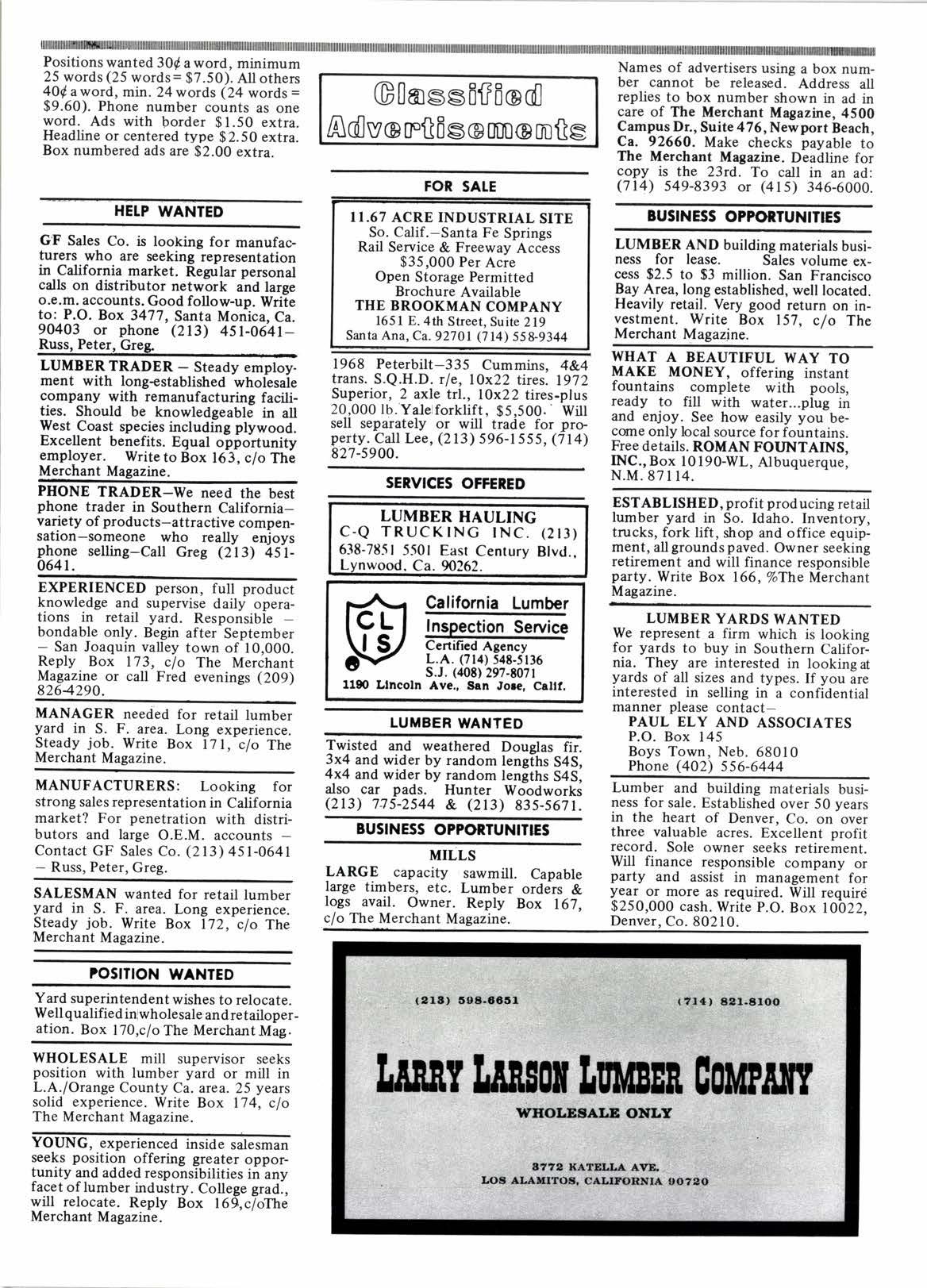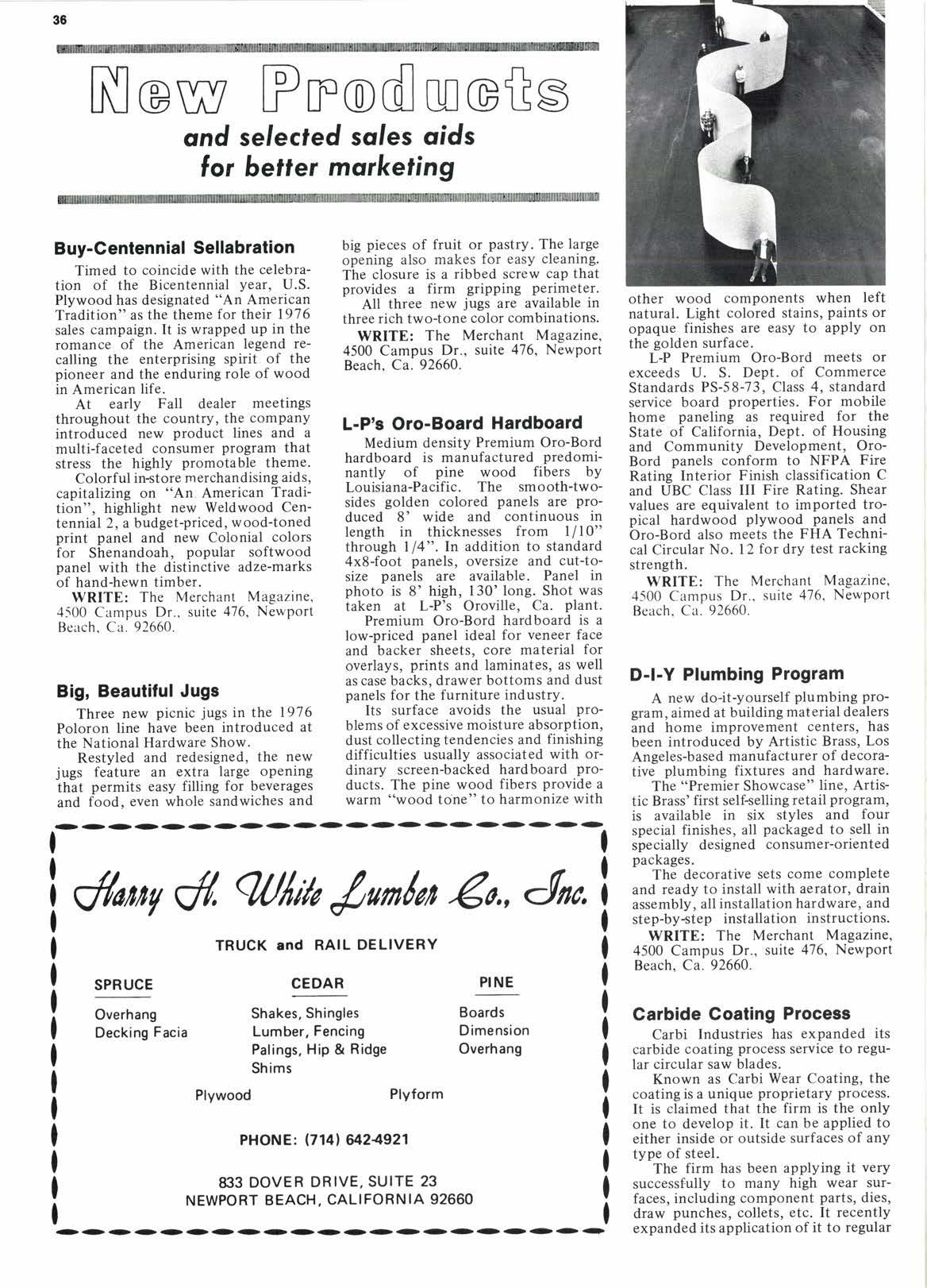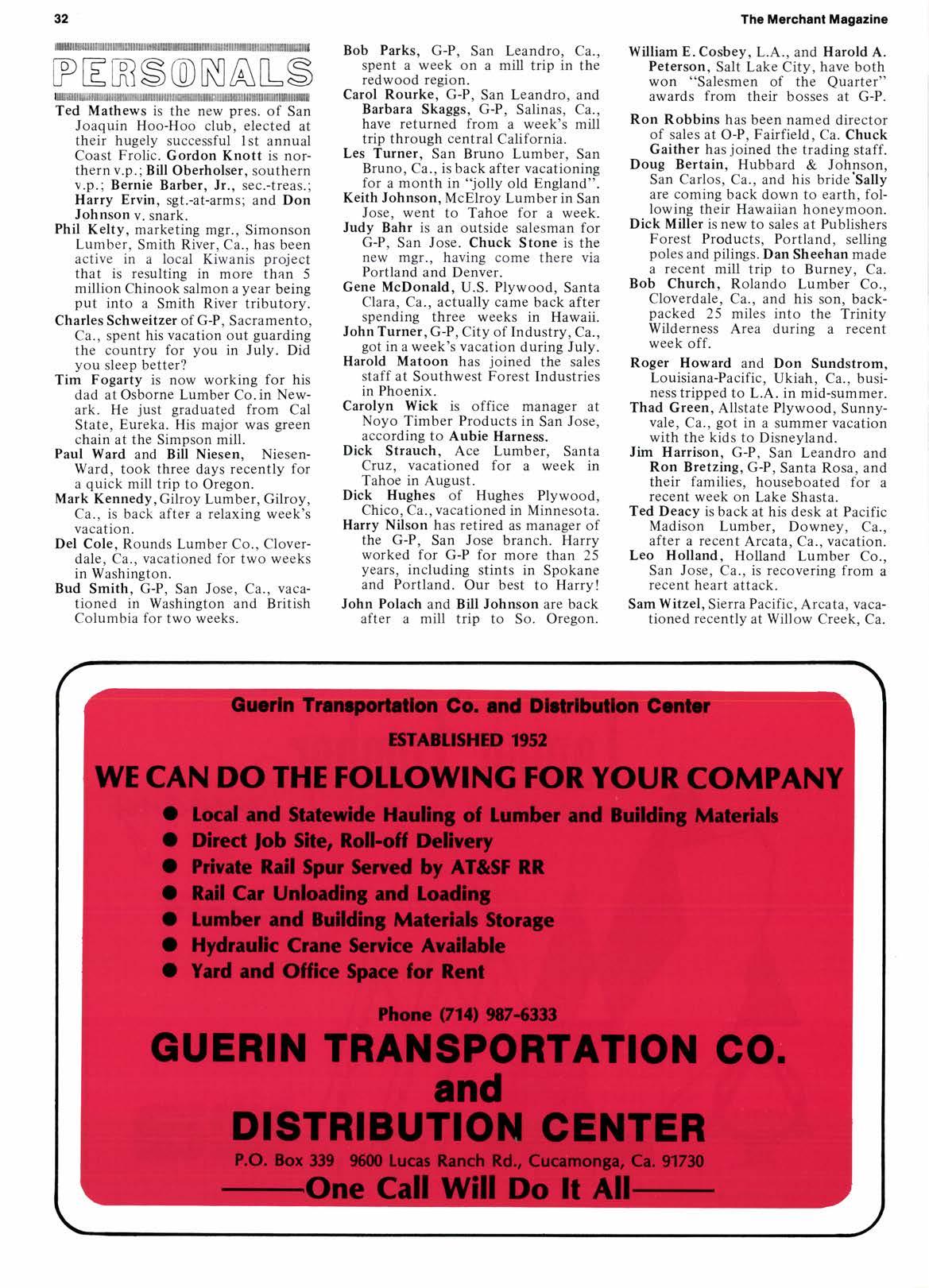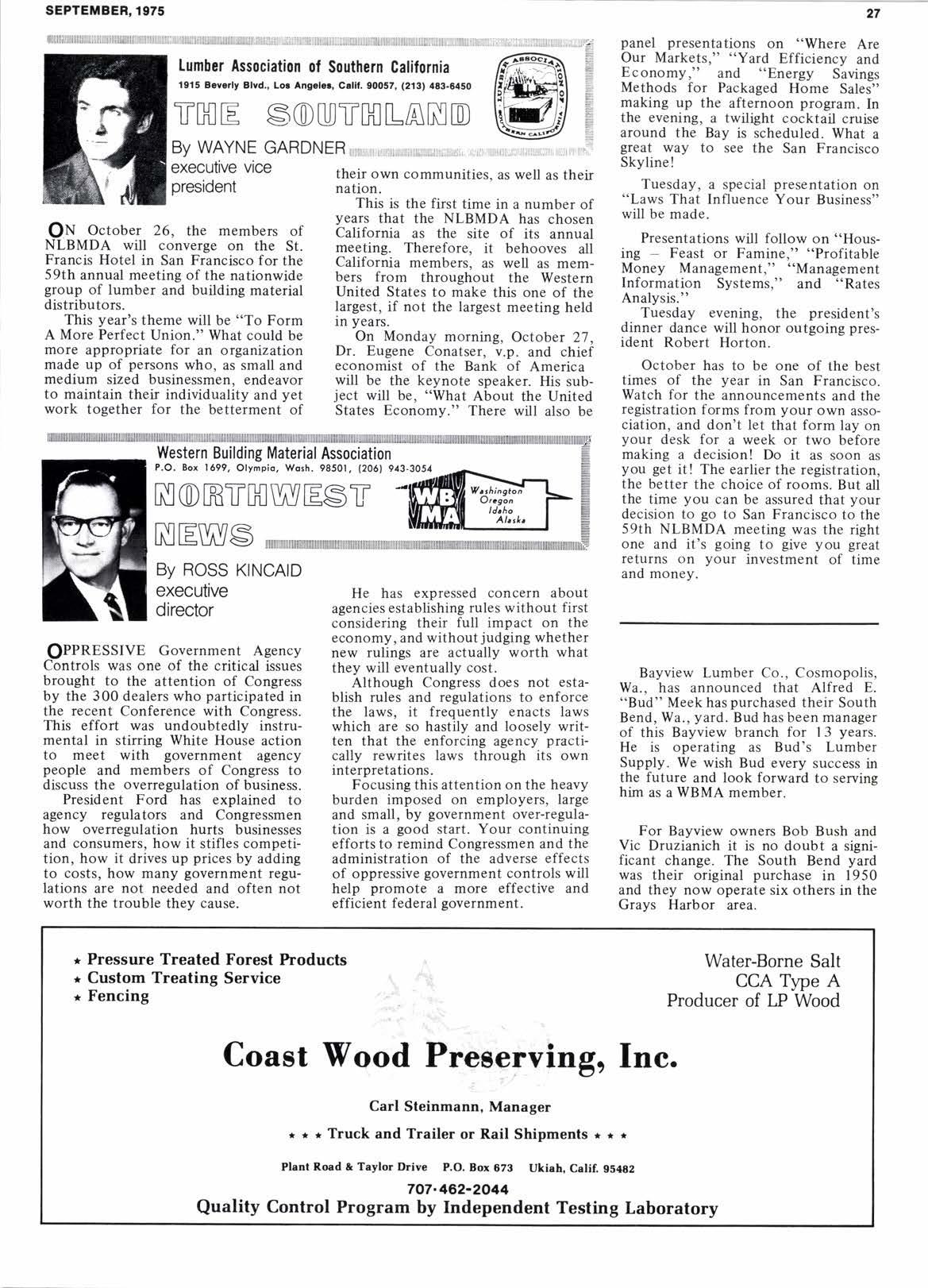
6 minute read
The advantages and disadvantages of hedging
by Larry Mollner Commodity Manager Thomson & McKinnon Auchincloss Kohlmeyer Inc. Los Angeles
and down together. These identical price moves result in a perfect hedge. Actually, futures only tend to maintain similar price moves. Business outlook, news developments, changes in supply or demand can cause immediate changes in either cash or futures prices that are not necessarily identical. The fact that the price moves of cash and futures are not identical is what makes some hedges more effective than others.
This brings us to probably the most important terms of any discussion on hedging- 8asls. The basis is the difference between the cash market price of a particular commodity at a particular time and the futures prices for the closest delivery month. With the knowledge that cash and futures prices tend to converge during the delivery month and an understanding ofthe basis relationship, (Futures selling above cash: premium or below: discount) hedgers can more accurately evaluate the probable results ofany hedge.
Non-convergence at delivery is an additional hedging risk. There have been periods in forest products futures history where futures and cash did not converge: most notably during price controls in 1972-1973.
Most unsuccessful hedges are a re' sult of lack of knowledge regarding the basis and where the timing is not closely tied to a deliverable month. Accordingly, successful hedgers generally seek hedge positions with reduced risk and that hopefully results in a hedging profit, where futures profit will hopefully exceed cash market losses or visa versa. This is best achieved with a thorough knowledge and understanding of the basis.
There are two basic costs in hedg' ing: Brokerage Commissions and in' terest cost on the required margin deposits. Commodity brokerage com' missions can vary from firm to firm but are generally considered quite small in relation to the value of the contract.
BASIS: the difference between the price of a cash commodity and the price of a futures contract f or a commodity of the same description; the difference (over or under) between the price of an "actual" and a futures contract. The nature of a change in "cash" commodity prices is twofold: price level change and basis change.
One of the principle disadvantages in hedging is that one's business is not exclusive to those items traded in the futures market. The greater the difference between the specifications of the futures contract and the cash items being hedged, the greater the possibility the hedge will not result in a perfect hedge. Obviously, hedging in KD Hem Fir 2x4 RL will more likely provide success in a hedging program than would laminated beams or lxl2 boards.
Another disadvantage develops if the hedge requires the cash transaction and futures market offset to take place in other than a deliverable month. The further the lifting of the hedge (offset) takes place from delivery, the greater the risk of price variability.
The second cost is a result of the amount of money a buyer or seller deposits with his broker, original margin. While margin is not actually an expense, the cost of the money for the time is committed is a cost. If price changes result in an unrealized profit in the hedgers account, money in excess of the original margin required may be withdrawn. Conversely, if the price changes adversely to the position and the original margin is impaired, additional funds "maintenance margin" will be required. While the costs of hedging are a minimal form ofinsurance against adverse price moves, consideration must be given to any cash flow problems which result if maintenance margin is required.
Hedging examples are usually illustrations of perfect hedges (buy cash, sell futures, identical price moves, sell cash and buy futures or visa versa.) Everyone is aware he or she is not living in a textbook business world. I have, therefore, chosen two examples that took advantage of market circumstances and resulted in ahedging profit. All hedges will not provide a hedge profit, (Futures profit greater than cash loss or visa versa). However, opportunities do arise in the futures market that, properly understood and utilized, can make the time and expense of following the futures market a profitable business tool.
Example ffL. Realizing potential labor problems in British Columbia could cause extremely volatile conditions, an office wholesaler saw extra risks in a transit inventory. Being knowledgeable on futures, however, he decided to transit some KD Hem Fir 2x4's and hedge in the futures market. On Monday, June 16 he contracts for mill shipment of KD Hem Fir 2x4's @ $132 net and sells July Lumber contracts @ $145.50. Mill shipment hopefully would not be made for at leist one week and a lengthy routing to a diversion point was given. Object: Have rolling cars as a strike becomes a greater possibility but have them sold in "the substitute market" (futures) in case there is no strike. Noting the premium the futures held to cash ($12) and realizing greater chance of convergence is likely by the time the
Story at a Glance
Second of a two-part series examines the uses of hedging as a management tool included are two "real life" examples of hedging in action.
cars reach the bumper, the wholesaler saw little or no risk in having these transits rolling. The cars were actually shipped on Friday, June 20. On July 7 the cars are sold @ $ I 32 a $5 discount to Random. Lengths reported cash price for Thursday, July 3 and futures bought at $139.50, the net results a $6 profit. The results, while profitable, also allowed the office wholesaler to continue to have this rolling stock during a period when volatile price action based on B.C. labor news might have precluded him from doing so. His awareness of the premium in futures allowed him to shift this portion of his normal business risk. Note also had the cars not been shipped for another week by Friday, July I I July futures were approximately $139, Random Lengths reported cash at $ I 4 I net so the $5 discount on the rollers would have yielded $136 an additional $4 profit, as cash and futures converged.
Example ff2. During the height of the reported chip problem, a southern California retailer with an extensive hedging background noted that green Douglas fir had moved up in price much more than the KD Hem-Fir and was near the upper limits of its price difference in recent years. Even with futures at a premium to KD Hem-Fir, he felt the differences between the two species would come back to a more normal relationship. Futures would be a better substitute purchase than some Douglas fh 2x4 stress 11750 F he had just contracted to deliver at a later date.
His hedge transactions went like this: May 2 sold cash Douglas fir 2x4 stress f,1750 F with $216.50 his estimated mill cost. May 6, bought July futures @ $157.30. June 10, bought cash $196.00 or $20.50 less than his estimated cost. June 13, sold July futures $147.50 for a loss of $9.80, but $10.70 less than his estimated cost, less futures losses. Had he not hedged and realized a futures loss his net result would have been $20.50 cost savings. During the height of the chip problem he might not have chosen to make. the sale or felt it necessary to cover his short cash position immedi ately at his estimated cost. The knowledgeable use of futures however resulted in a nice hedging profit.
Both of the above examples took place at times when price volatility was governed by immediate or pending news, the latter also illustrating hedging is possible in other items other than the deliverable grade. Each was able to conduct a portion of his business when others mieht have been more cautious.
All hedges will not result in hedge profits or even perfect hedges but may often result in hedge losses. Hedging like the other phase of ones business should be incorporated as part of ones business plan. Hedging is not something that can be done only at ideal times. Unless one becomes aware of the futures market and its behavior this valuable business tool will probably not work as expected. Even worse, ignored until a real need arises hedging will more than likely give results far less than satisfactory. Disregarded itwill never provide its benefits.
Hedging is a business tool. Knowledgeable use of futures can reduce normal business risks as well as aid in capital management. Profitable hedge opportunities will also be recognizable. There is little doubt that futures are here to stay and that those companies using futures hold a definite business edge over those that are not.
The next time you find yourself checking futures in the paper, losing business to the fellow down the street or thinking about updating your sales methods and capital management program, ask yourself if there isn't more you should know about futures.










